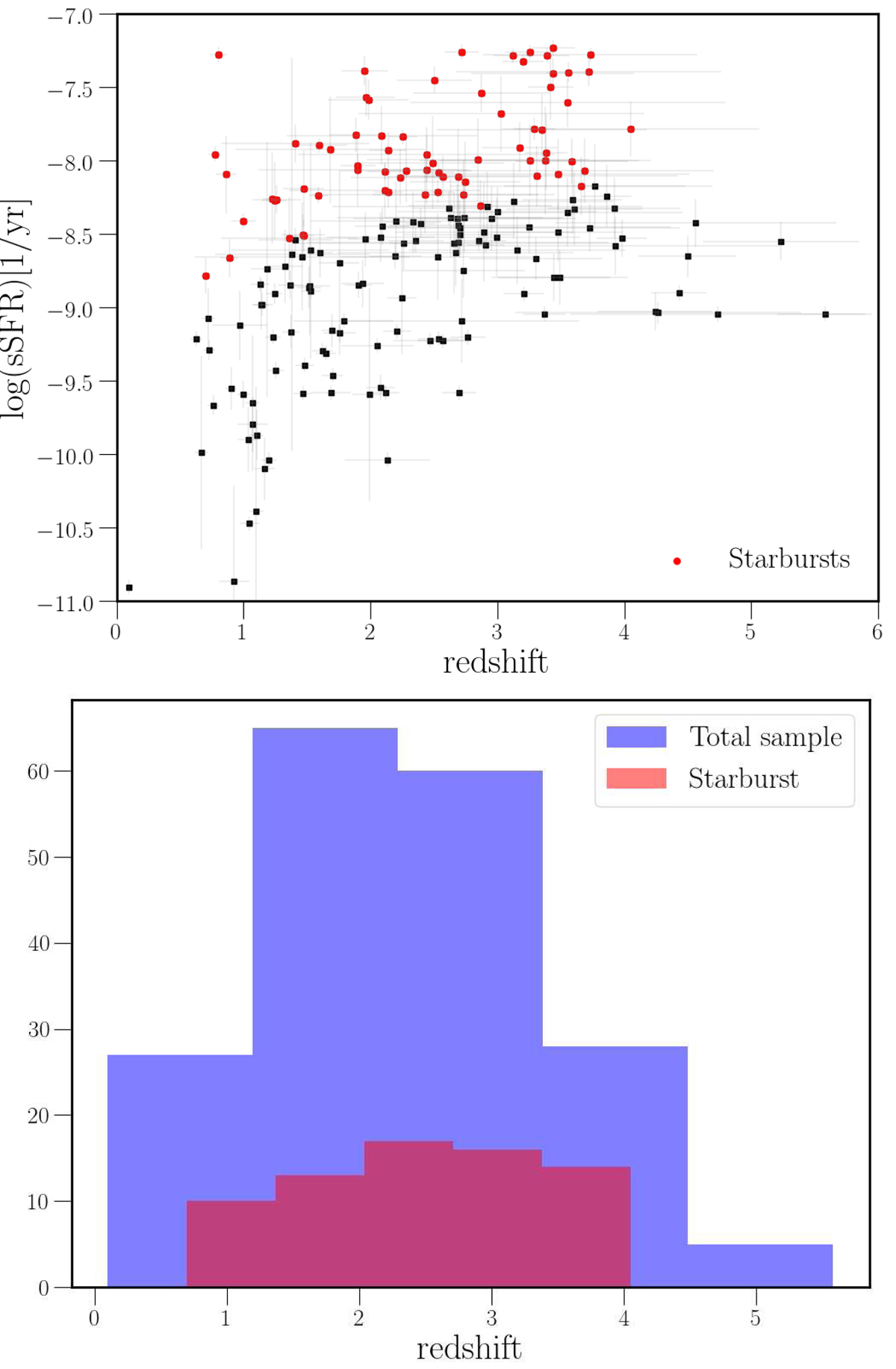Fig. 8.

Top panel: specific star-formation rate (sSFR) against redshift for the total sample. The galaxies classified as starbursts using the definition of Speagle et al. (2014) are marked as red dots and are seen to exhibit a higher sSFR than the rest of the population. Bottom panel: number-redshift distribution of the total sample (blue bars) and the starbursts (red bars). The fraction of starbursts increases up to z = 2, and it is similar out to z ∼ 3−4 (around 40%), decreasing to higher redshifts z > 4. A larger sample at z > 4 would be required to investigate the evolution of the starbursts over cosmic time.
Current usage metrics show cumulative count of Article Views (full-text article views including HTML views, PDF and ePub downloads, according to the available data) and Abstracts Views on Vision4Press platform.
Data correspond to usage on the plateform after 2015. The current usage metrics is available 48-96 hours after online publication and is updated daily on week days.
Initial download of the metrics may take a while.


